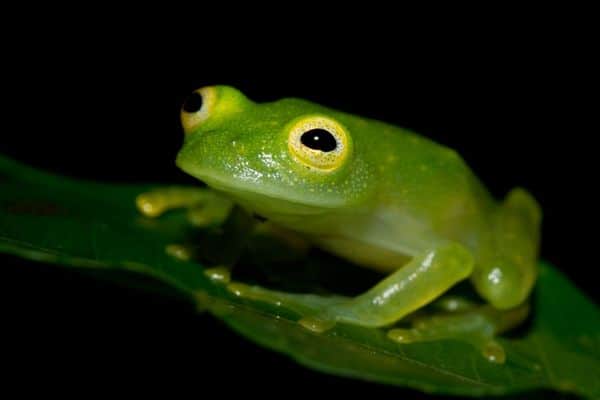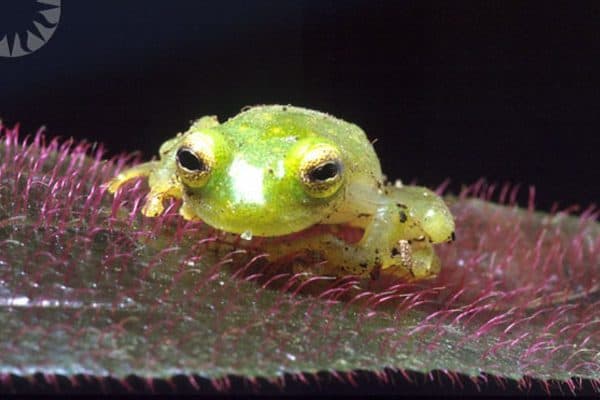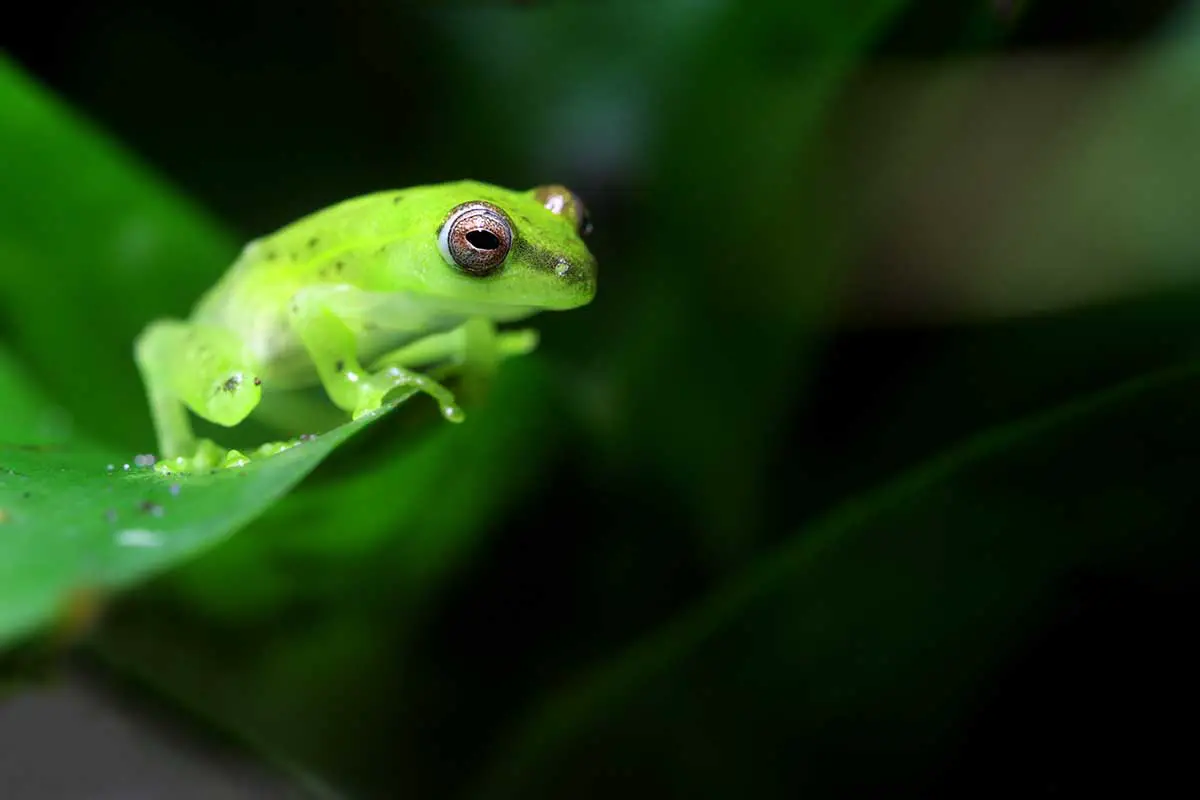Glass frogs are an unusual group of frogs with unique characteristics. They are found in rainforests in Central and South America. Their name is derived from their see-through skin, which is almost transparent in some areas. These amphibians have adapted to blend into their environment. Here are some more interesting facts we’ve put together about glass frogs. Keep reading to learn more about these fascinating amphibians.
15 Facts about Glass Frogs
1. Underside Skin is Translucent

Glass frogs are usually some shade of green in color, ranging from dark olive to bright, vibrant green. They easily camouflage into the tree leaves in the rainforest.
When you see the underside of a glass frog, you can see how it earned its name. The skin on their belly and chest is translucent, so you can see through it.
You can see the frog’s organs working. The translucent parts of their body, including their legs, help the frog blend into its surroundings.
2. They Have Sticky Toes
Glass frogs have to be able to climb trees. Not only that, they must be able to grip different surfaces on the trees, from leaves to bark, so they’ve adapted with their sticky toes.
Their toes have these round suction cup disks that cling to surfaces. They secrete mucus that keeps their toe pads from gathering dirt and debris.
3. They Are Arboreal Frogs

Speaking of climbing with sticky toes, did you know that frogs that live in trees are called arboreal frogs? That’s right. Glass frogs are arboreal frogs.
The sticky toes we were just talking about make arboreal frogs like the glass frog unique. They can jump long distances to escape predators and land on another leaf to stick to.
4. Females Choose A Mate By Their Call
Male glass frogs each have a unique little croak, and females are attracted by these calls. The female chooses her mate based on his croaks.
Males also wave their hands and legs as they call from a leaf that usually has some water. Finally, females come to the male to lay their eggs, which remain on the leaf after mating.
5. Females Are Usually Bigger Than Males
There are few differences between male and female glass frogs. The main difference is males are typically smaller than females.
Females also tend to be a bit fatter than males. So if you see two glass frogs side by side on a leaf, the bigger of the two is the female.
6. Males Are Very Territorial During Mating Season

A male glass frog sitting on a leaf calling a mate is not one for other male frogs to mess with. Males are very territorial during mating season and with their eggs.
If another male frog tries to encroach on territory, they’re met with squeaking warning calls. If they persist, the male guard will wrestle him until he leaves.
7. They Lay Their Eggs On A Leaf, Not In Water
Most frogs lay eggs in water but not the glass frog. After mating, females deposit about 18 to 30 eggs on a leaf above water.
When the eggs hatch, the tadpoles drop off the leaf and into the water below. After that, they begin their metamorphosis, which can take a few days or a few weeks, depending on the temperature.
8. Males Guard And Care For Eggs

After mating, males stay behind on the leaf and guard the eggs against predators. Males also keep eggs wet and hydrated by transferring moisture from their bellies.
Male glass frogs attract several females to the same leaf to mate. They often end up protecting several different clutches of eggs on one leaf.
9. Main Threats To Eggs – Frog Flies And Wasps
The main threats to glass frog eggs on leaves are frog flies and wasps. Frog flies lay their eggs on the glass frog clutches. After hatching, maggots feed on the frog eggs.
Wasps just see a tasty snack in glass frog eggs. The male guarding the eggs will use his legs to kick wasps away from his clutch.
10. They Glow In The Dark

Some glass frogs seem to glow in the dark. They display a bio-fluorescence that still baffles scientists trying to understand why.
It’s believed that this phenomenon is caused by light reflecting from leaves combined with their translucent skin. It’s different from bioluminescence, where the animal emits a glow.
11. They Live Up To 14 years
Glass frogs have a relatively long lifespan compared to other amphibians. On average, they live between 10 to 14 years in the wild.
They are likely to live so long because they’re so well camouflaged from predators. They also are able to escape easily by jumping over 10 feet to safety.
12. Tadpoles Take Up To 10 Months To Develop
Glass frogs have one of the longest larval stages, taking 10 months to develop into a frog. Since it takes glass frog tadpoles so long to develop, the frogs don’t have large populations.
Conditions have to be right for tadpoles to undergo their metamorphosis. Sometimes it can take them a whole year to fully develop into a frog.
13. There Are About 160 Species Of Glass Frog
Each species has unique adaptations suited for its environment. They all live in trees and enjoy a warm, humid climate.
New species are being discovered constantly, with the most recent discovery in May of 2022. The mashpi glass frog was just recently discovered by miners in Ecuador.
14. They Are Nocturnal

Another fun fact about glass frogs is that they are most active at night. During the day, they hide under leaves and sleep, emerging at night to feed and call mates.
Their calls dominate the forest at night, particularly during the mating season. When exploring rainforests, spotting a glass frog is unlikely unless you know where to look and what to look for.
15. Are Glass Frogs Poisonous?
There are many amphibians that release toxins as a defense mechanism. Glass frogs are not in this group. They are not toxic or poisonous.
Glass frogs use camouflage as their main source of defense from predators. They blend in so well they don’t need toxins to protect themselves.




